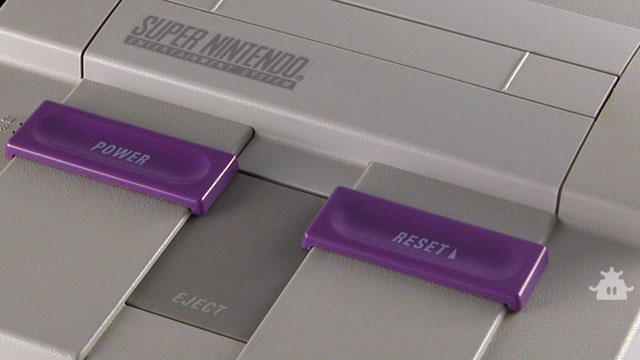
A common complaint leveled at Nintendo in recent years has been against the company’s relatively cautious footsteps into the world of online gaming. With Sony’s PlayStation Network and Microsoft’s Xbox Live services both setting the standard for online experiences long before Nintendo threw its hat in the ring, the company has been playing catchup in the years since. Though arguably in a much better place with Nintendo Network, the company’s tenuous first steps into the online arena belie the rich history that Nintendo actually has with the world wide web!
The Beginning
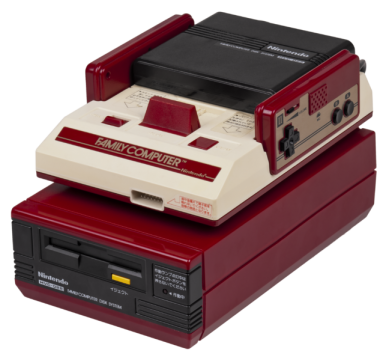
Nintendo actually already had designs on console networking as far back as NES, though more specifically in Japan with Famicom. Nintendo sold a modem peripheral for Famicom that tapped into an online server, providing financial news to customers, as well as other utilities like weather and video game cheat codes. No actual games were released for use with the device, and it never expanded beyond Japan’s shores (despite NES having a modem port built into its underside). It was a start, though, and Nintendo was determined to keep trying.
Satellaview
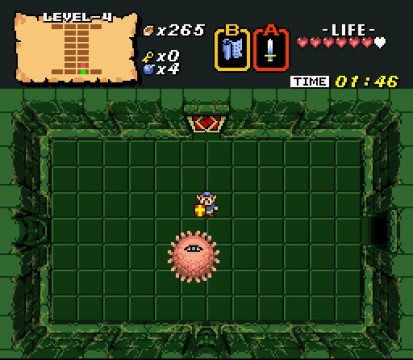
Nintendo boldly strode forward into the world of interconnectivity with its Satellaview, a satellite broadcast modem that plugged into a Super Famicom and delivered digital content to the system. Players paid a monthly fee to access the service, which in turn granted them access to a bevy of content, the most important of which being a range of video games from Nintendo. Satellaview was truly ahead of its time, though it was peculiar by today’s standards for online services.
Titles weren’t permanently housed within a Satellaview unit; the games were broadcast in regular intervals (once a week, for example), pieces at a time. This episodic approach allowed Nintendo to keep its game offerings fresh, while also enticing players to maintain their subscriptions to see what came next (this approach hasn’t been completely dropped, as players familiar with Halo 4‘s Spartan Ops will recognize this type of content release). The service, much like the Famicom Modem, never came to the west, but a number of fascinating games were released that players in the US and Europe never got to experience (and probably never will).
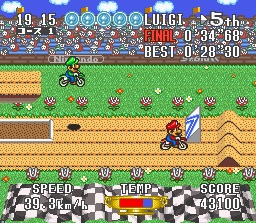
Please note, some of the titles below are rough translations of the original Japanese names, and may not be totally accurate. The meaning of the “BS” prefix is also debated amongst translators, but is generally taken to stand for “Broadcast Satellite.”
BS The Legend of Zelda: The Legend of Zelda was remade for Satellaview with the graphical assets from A Link to the Past, and offered the ability to either play as Link or a female protagonist. It’s often informally thought of as a “Third Quest,” similar to the remixed Second Quest in The Legend of Zelda. The tile also apparently featured voice acting not found in any Zelda game before or since. Including this game, there were a total of three Zelda titles on Satellaview.
Kirby’s Toy Box: A collection of Kirby sub and minigames. As with the majority of Satellaview titles, depending on when a player logged into the service, different games would be available to play. A big chunk of the content was appropriated from Kirby Super Star.
BS F-Zero Grand Prix: Following the release of F-Zero on SNES, Nintendo developed the sequel for the game as an episodic release on Satellaview. Much of the original game found its way into the sequel, but multiple new tracks were developed for BS F-Zero, enough so that a second installment of releases was made. The game was considered for the west in cartridge form, but much like the ill-fated export of F-Zero Climax for Game Boy Advance, it never came to be.
BS Super Mario USA Power Challenge: This was an enhanced remake of Super Mario Bros. USA (or as it’s called here in the west, Super Mario Bros. 2), featuring 16-bit graphics. It was essentially a remix of the original game, with challenges peppered in at set times that altered the flow of the game.
That’s just a sampling of what Satellaview had to offer, though the bulk of the games were very Japan-centric and not likely to ever have been green-lit for the US or Europe. Still, it was a very interesting experiment nonetheless, and many people today clamor for these titles to see some form of rerelease via Nintendo’s eShop services.
Special Mention: Sega Channel
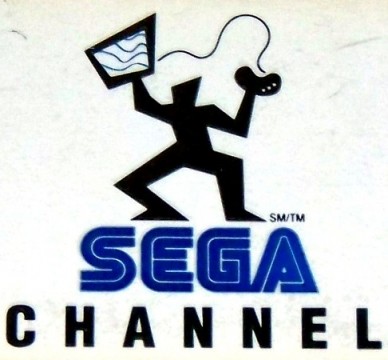
Though obviously not a Nintendo service, Sega Channel was basically Sega’s version of Satellaview, offering online access to games, demos, and content via Time Warner cable television services. Players inserted a special cartridge fitted with a cable wire into a Genesis in order to access the network. Sega had faith in its novel, if expensive, new service and actually made it available internationally, as opposed to just Japanese consumers. It was truly a testament to the ferocity of the Sega/Nintendo rivalry that Sega made such an aggressive stab at software dissemination. Sega Channel was not a huge hit in the west, but it lasted until 1998 and helped pave the way for many of the services that are commonplace on modern consoles. If only Nintendo had shown similar gumption.
XBAND
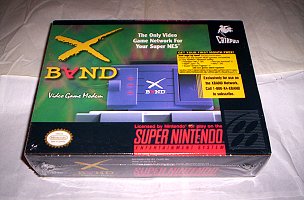
If the name XBAND looks a tad bit on the extreme side, just remember it was the nineties and everything tried to have an edge. Though Satellaview never saw the light of day for North Americans and Europeans, there were still those who believed that SNES could be a viable online gaming machine outside of Japan. However, while Satellaview aimed to provide temporary content downloads via its network, XBAND aspired to be the pioneer of online multiplayer. Offered for both SNES and Sega Genesis, XBAND was extremely ambitious, but sadly far ahead of its time.
Released in the mid-nineties, XBAND was a dial-up modem that plugged into the top of an SNES. Cartridges were then inserted onto the top of the device itself (in much the same way a cartridge was plugged onto a Game Genie), and so long as its multiplayer was supported by XBAND, the title could be played online. XBAND required a regular service fee, but there was a decent amount of bang for the player’s buck. An email system was offered, as well as newsletters, leaderboards, and player profiles. Again, a great idea, but the world just wasn’t ready for it.
A big part of the problem was that the number of people who knew XBAND even existed was limited to those who regularly read video game magazines (I know I saw the ads in Nintendo Power). Though not terribly prohibitive, the service wasn’t especially cheap, and additional charges crept in when trying to play out of area players, for instance (remember, dial-up, so it was like doing long-distance calls!). Toss in the latency issues that more data-rich titles experienced when playing online, and XBAND was never able to really take off as it deserved.
Regardless, for those in the know, playing titles like Super Mario Kart online was a blast (sort of makes one wonder why fans can’t play Super Mario Kart online with Wii U if it could be done on SNES, but I digress). Though Nintendo eventually got around to online racing with Mario Kart DS, it’s astounding to think that players were capable of doing just that as far back as SNES! Had Nintendo acted differently and brought XBAND under its wing, who knows how different both companies’ futures could have been.
The Future
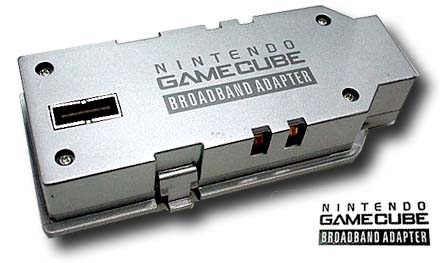
Well, the future being our past, at this point, but in any event, Nintendo wasn’t quite done with online functionality moving on to Nintendo 64 and beyond. The failed 64DD peripheral that only ever released in Japan had its own online service, which offered demoes, web surfing, and limited online interaction. The most notable software released with the intent of utilizing the service (called Randnet) was the Mario Artist series. Mario Artist actually allowed players to swap creations with one another!
GameCube broke the trend of Japan-only internet connectivity (officially sanctioned by Nintendo, that is) when the Nintendo GameCube Broadband and Modem Adapters began being sold here in the west. The devices plugged into the bottom of a GameCube in order to be used (that’s what that port was for on the underside of the system that so many people wondered about!). A very limited number of games could actually be played online, the most significant of which being Sega’s Phantasy Star Online Episode I & II, and the biggest use of LAN connectivity came from players engaging in rounds of Mario Kart: Double Dash!! Sadly, as with most of Nintendo’s online endeavors up to that point, GameCube never caught on as an online machine.
Nintendo and online, old buddies from way back– who knew, right? With Wii U and 3DS, Nintendo has luckily, finally gotten much closer to what consumers expect from a video game company’s online services. It’s not perfect, but Nintendo Network continues to grow and evolve, and as Nintendo irons out the kinks, fans are closer to experiencing an online experience that the company envisioned almost thirty years ago.




 ShareThis
ShareThis







These were some cool first steps. A device that (literally!) phones home to a central authority, pulls down updates, then lets you patch in different mechanics to a program you already bought… those are functions that mobile OSes, modding communities, ROM hacking and software-as-a-service make commonplace today, but none of that was around at the time.
I find technological false starts (I’d call each of these devices a false start as far as multiplayer gaming goes) to be fascinating, as over and over we’ll see ideas that were well ahead of their time. All this stuff happens in firmware now, and atop UDP (and sometimes TCP) over IP. Those aren’t necessary ingredients, but they’ve made all this other stuff much easier to spread and adapt.
Whew! Made a comment without nitpicking about dialing modems between households or picking data out of TV signals not being “online”, and about “web” not being “internet”. …Oh, oops.
Still Friends from XBAND
Back when I was playing XBAND on the SNES, I met a gamer called “The Wise Man” and we are still friends now on Wii, 3DS, and Wii U. We played games online such as Mario Kart, Street Fighter II, Mortal Kombat II, and Killer Instinct. Back then, we had time to game, but it’s difficult to make time nowadays. It would be great if Nintendo established more convenient matchmaking features for Friends on their consoles. I can see on Miiverse that The Wise Man is rocking Mario Kart 8. It would be nostalgic to play him in Mario Kart again.
Hyawatta-It’s really cool that you built a lasting friendship from XBAND. I agree, Nintendo really should step back and mirror what Sony and Microsoft have going on with some of the more basic aspects of online play. Miiverse is awesome, but the in-game interactions should be smoother.
I STILL can’t figure out why Nintendo just doesn’t emulate what the big guys are doing, just with out voice chat (kids don’t need to hear racism and swearing! heheh)